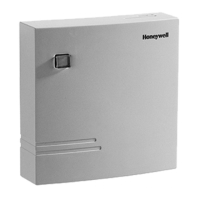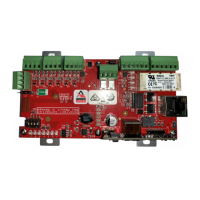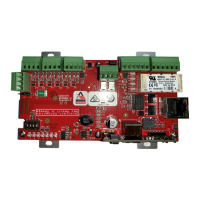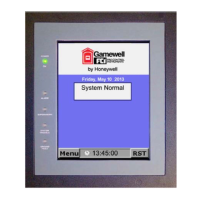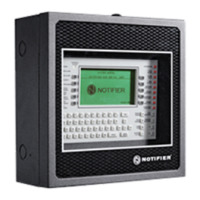Configuration Parameter Definitions
Input Parameters Set Up Group
Release M DR4500A Classic Series Circular Chart Recorder With or Without Control Product Manual 85
April 2017
Upper Display
Range of Setting or Selection
or
–999 to 9999
in Engineering units
INPUT LOW RANGE VALUE in engineering units is
displayed for all inputs but can only be configured for
linear or square root transmitter characterization.
Otherwise, this is a read-only display of the low range
value for the selected T/C or RTD input including
transmitter characterization, if applicable.
Scale the input signal to the display value you want
for 0%. See example on previous page. The control
setpoint for Input will be limited by the range of units
selected here.
LOW FLOW CUTOFF—Lets you set a value in percent
of range below which the applicable totalizer does not
increment.
Prompt appears only if totalizer option
is present in the recorder.
INPUT COMPENSATION — used to compensate the
input for drift of an input value due to deterioration of a
sensor, or some other cause; select the value you want
on the input.
0 to 120 seconds
No filter = 0
FILTER FOR INPUT — a software digital filter is
provided for the input to smooth the input signal. You
can configure the first order lag time constant from 1 to
120 seconds. If you do not want filtering, enter 0.
BURNOUT PROTECTION (SENSOR BREAK) provides
most input types with upscale or downscale protection if
the input fails.
Not available for inputs 0-5V, 0-10V, or 4-20 mA.
NO BURNOUT — Failsafe output applied for failed
input.
UPSCALE BURNOUT will make the indicated PV signal
increase when a sensor fails, and flash the upper
display.
DOWNSCALE BURNOUT will make the indicated PV
signal decrease when a sensor fails, and flash the upper
display.
NOTE: For no Burnout (that is, “None”) to function
properly on a linear input, there must be a dropping
resistor directly across the input terminals (that is, not
remote), then the unit can detect the “zero” voltage that
occurs when the 4-20 mA line is opened.
EMISSIVITY is a correction factor applied to the
Radiamatic input signal that is the ratio of the actual
energy emitted from the target to the energy which
would be emitted if the target were a perfect radiator.
Available only for “Radiamatic” inputs.
Repeat the procedure for INPUT 2 configuration.
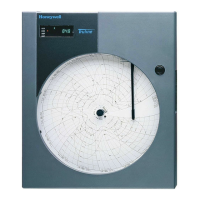
